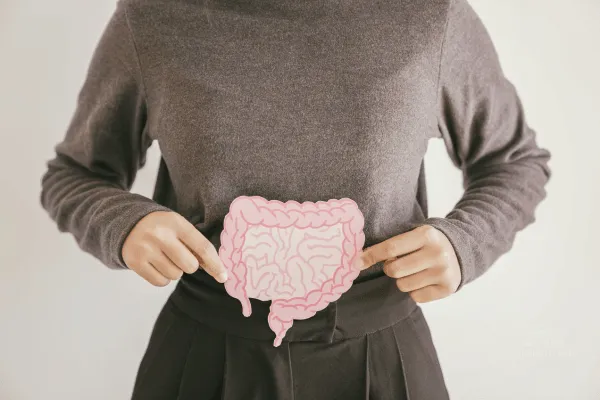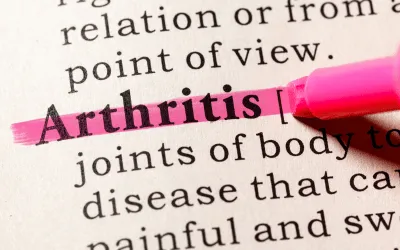About Arthritis
As the nation’s #1 cause of disability, arthritis affects nearly 60 million adults and 300,000 children. Over 100 types of arthritis and related conditions damage the joints and often other organs.
How can we assist you?
Helpful Tools for You

Gut Bacteria and Juvenile Idiopathic Arthritis: A New Frontier in Early Detection
For the first time, scientists have discovered that differences in gut bacteria are associated with the development of juvenile idiopathic arthritis (JIA), an autoimmune disease that affects children and causes painful inflammation in the joints. What makes this discovery remarkable is that these bacterial imbalances are present years before the disease manifests, potentially paving the way for earlier detection and intervention.
Groundbreaking Research on Gut Health and JIA
A team of researchers from the University of Florida, along with collaborators from Sweden, analyzed stool samples from one-year-old children as part of a long-term study called All Babies in Southeast Sweden. The study compared the gut bacteria of children who went on to develop JIA with those who did not, finding significant differences between the two groups.
According to Angelica Ahrens, co-first author of the study and a postdoctoral associate in the UF/IFAS department of microbiology and cell science, “Our work suggests that an imbalance in microbes, especially the increased prevalence of several pro-inflammatory bacterial species, could serve as a potential indicator of future disease risk.” The presence of these bacteria could signal the early onset of JIA years before traditional symptoms appear.
The Role of Gut Bacteria in JIA
JIA, also known as childhood arthritis, is an autoimmune disease that causes pain, swelling, stiffness, and inflammation in the joints. These symptoms can make daily activities difficult for affected children, and current treatments, such as anti-inflammatory drugs and steroid injections, focus on reducing symptoms rather than addressing the root cause of the disease.
The findings from this study suggest that the gut microbiome—specifically, the presence of bacteria that promote inflammation—may play a role in the development of JIA. Children with certain gut bacteria were found to be nearly seven times more likely to develop the disease. In contrast, bacteria that promote a healthy gut lining were either absent or reduced in children who later developed JIA.
Screening Tools and Future Research
The researchers believe that their findings could lead to the development of screening tools to identify children at risk for JIA before symptoms arise. By identifying these bacterial imbalances early, healthcare providers could intervene with targeted therapies to reduce the risk of disease onset.
"Looking ahead, this line of discovery could lead to the development of screening tools in early pediatric wellness visits," said Ahrens. "By constructing risk profiles and implementing targeted interventions and preventative measures, we may be able to prevent disease onset in some people."
However, the researchers acknowledge that more work is needed to fully understand the role of these bacteria in the development of JIA. Future studies will investigate how gut bacteria in children with JIA progress over time, and researchers aim to explore whether these bacterial imbalances contribute to other autoimmune conditions that appear during childhood.
Implications for Juvenile Arthritis Treatment
While current treatments for JIA focus on managing symptoms, the possibility of targeting the gut microbiome opens up new treatment pathways. Dr. Erik Kindgren, co-first author and a pediatrician who treats children with JIA at Skaraborg Hospital in Sweden, emphasizes the need for alternative approaches: “There is a need to find alternative approaches, and the bacteria found in gastrointestinal tracts may be a promising place to start."
Future research may lead to treatments that restore balance to the gut microbiome, potentially preventing the development of JIA altogether. For families affected by juvenile arthritis, these findings offer hope for earlier intervention and better outcomes.
Conclusion: The Promise of Gut Health in JIA Prevention
This research marks a critical step forward in our understanding of juvenile idiopathic arthritis. By focusing on the gut microbiome, scientists are uncovering new ways to identify and treat this debilitating disease before it causes lasting damage to children’s joints. With continued collaboration between researchers in the U.S. and Sweden, the hope is that early detection and prevention strategies for JIA may soon become a reality.
At the American Arthritis Foundation, we are committed to supporting innovative research that offers hope to children and families affected by arthritis. As we learn more about the role of gut health in autoimmune diseases like JIA, we can work toward a future where early intervention and personalized treatment plans lead to better outcomes for all.
Effects of Arthritis

Cause of Disability
In the United States, 23% of all adults, or more than 54 million people, have arthritis. It is a leading cause of work disability, with annual costs for medical care and lost earnings of $303.5 billion.

Workforce Effects
Sixty percent of US adults with arthritis are of working age (18 to 64 years). Arthritis can limit the type of work they are able to do or keep them from working at all.

Global Impact
In fact, 8 million working-age adults report that their ability to work is limited because of their arthritis. For example, they may have a hard time climbing stairs or walking from a parking deck to their workplace.
Promoting Interventions That Reduce Arthritis Pain
American Arthritis Foundation recognizes several proven approaches to reduce arthritis symptoms:
Be active. Physical activity—such as walking, bicycling, and swimming—decreases arthritis pain and improves function, mood, and quality of life. Adults with arthritis should move more and sit less throughout the day. Getting at least 150 minutes of moderate-intensity physical activity each week is recommended.
Protect your joints. People can help prevent osteoarthritis by avoiding activities that are more likely to cause joint injuries.
Talk with a doctor. Recommendations from health care providers can motivate people to be physically active and join a self-management education program. Should your arthritis be interfering with your activities of daily living you may be a candidate to receive many new treatments, and learn how to reverse the arthritis condition.


